and the distribution of digital products.
DM Television
The Science of Soundproofing: A Look at 3D-Printed Acoustic Panels
2 Unit cell design and analysis
3 Unit cell experimental and numerical characterization
4 Rainbow AM labyrinthine panel
4.1 Panel design and fabrication
4.4 AM panel sound absorption results
5 Numerical evaluation of different labyrinthine sound absorption panel solutions
5.1 Macrocell with backing cavity
Conclusions, Acknowledgements, and References
4.1 Panel design and fabrication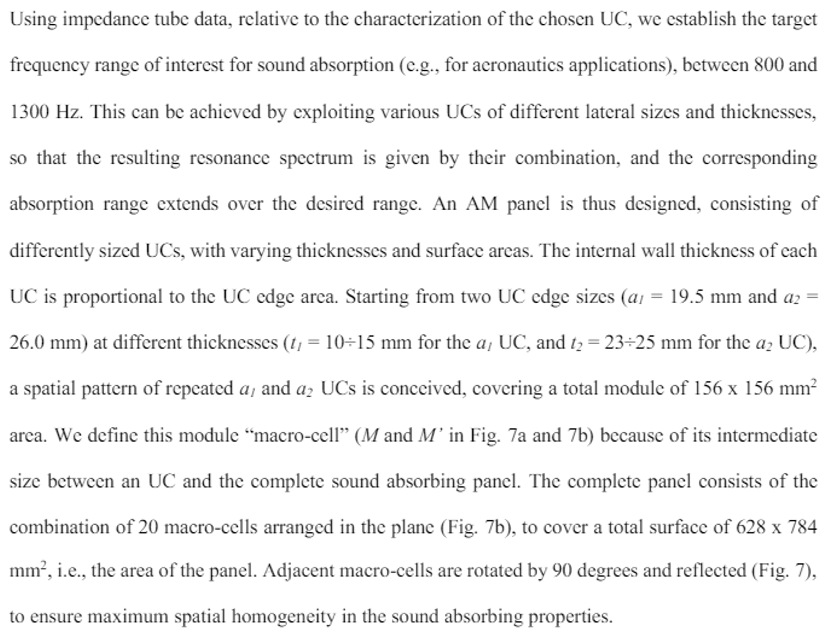
\ The polyamide panel is then manufactured through selective laser sintering (SLS), a technique where each level is sintered by a laser beam, directed by a scanning system. The process is repeated, and the prototype is built layer by layer. SLS is chosen as the most appropriate fabrication technique since it does not require supports to sustain oblique and horizontal protrusions and it allows to fabricate undercuts. However, to manufacture hollow structures like the UCs, it is necessary to include at least two apertures (on the top and bottom surfaces) for each UC cavity, in order to remove any residual powder from the fabrication process, so an additional opening is added for each UC. For the measurement phase, these additional openings are closed with properly sized polyamide caps that are fixed with aluminum tape to guarantee an acoustic seal. A 3D view of the final panel is shown in Fig. 7c.
\
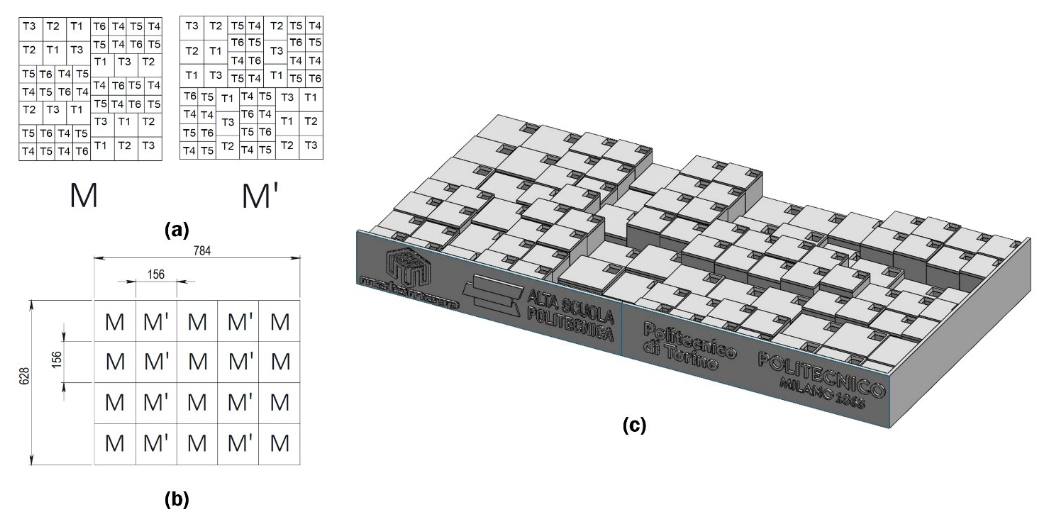
\
4.2 FE model of the AM panelThe AM panel can be modelled in FE using six different domains, shown in Fig.8, three of which are structural domains (the AM panel side walls, the front and back surfaces) and three are acoustic domains (the UC cavity voids, and the aperture “caps” on the front and back surfaces).
\
\
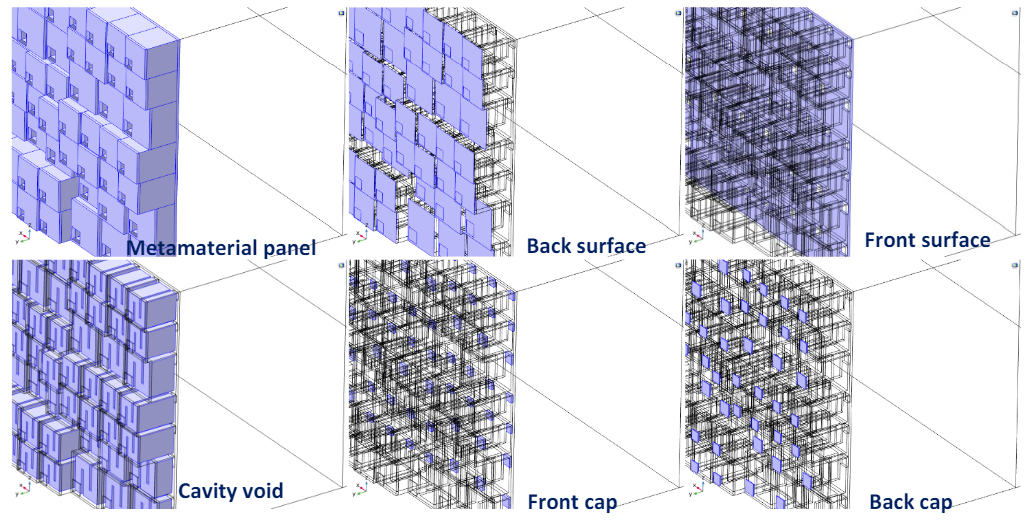
\
\
\
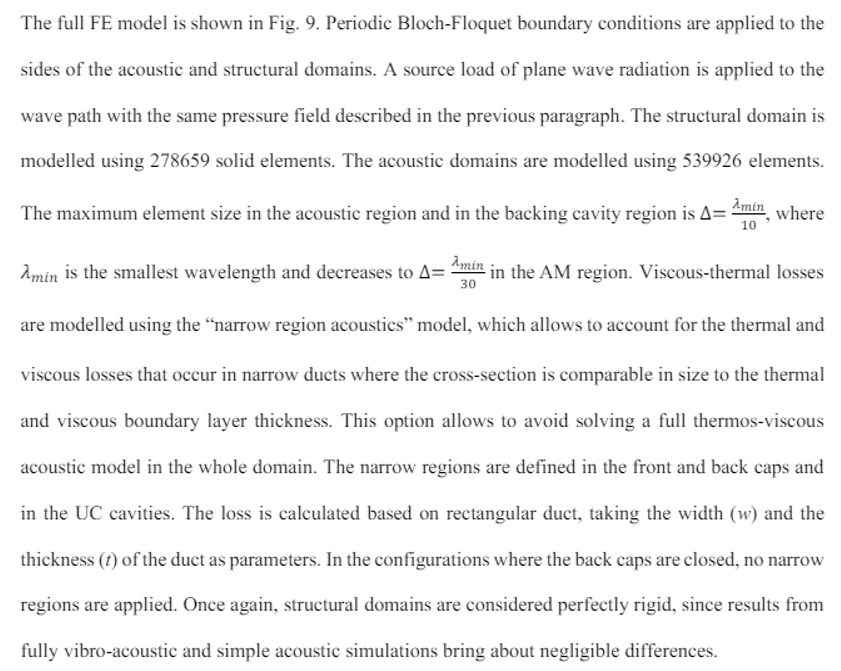
\
\
\
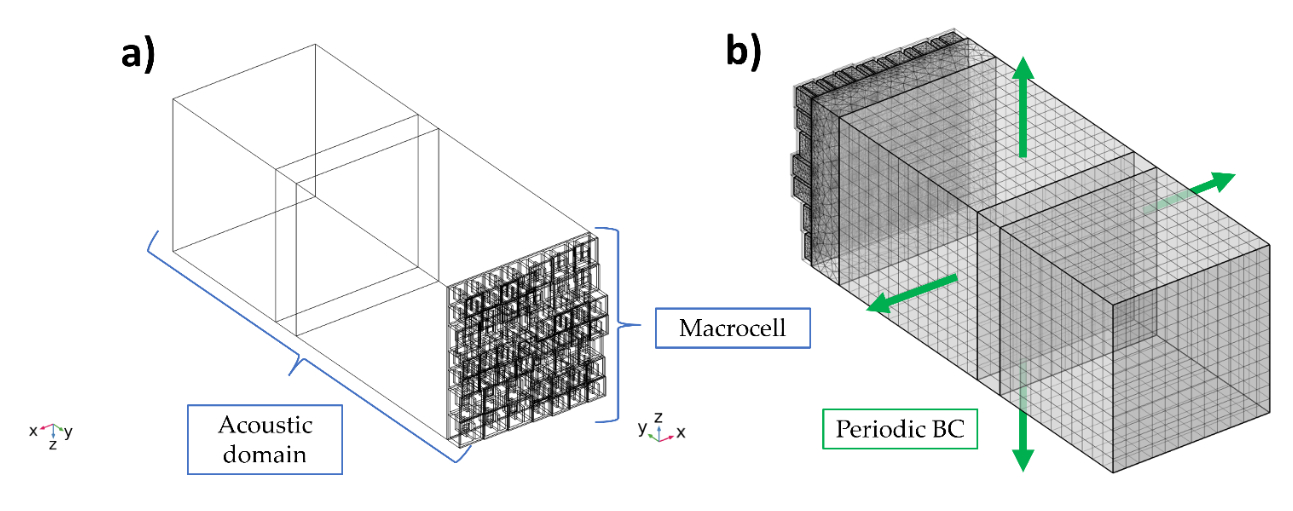
\ \
:::info This paper is available on arxiv under CC BY-NC-ND 4.0 DEED license.
:::
:::info Authors:
(1) F. Nistri, Department of Applied Science and Technology, Politecnico di Torino, Torino, Italy and Politecnico di Milano, Milano, Italy;
(2) V. H. Kamrul, Politecnico di Milano, Milano, Italy;
(3) L. Bettini, Politecnico di Milano, Milano, Italy;
(4) E. Musso, Politecnico di Milano, Milano, Italy;
(5) D. Piciucco, Politecnico di Milano, Milano, Italy;
(6) M. Zemello, Politecnico di Milano, Milano, Italy;
(7) A.S. Gliozzi, Department of Applied Science and Technology, Politecnico di Torino, Torino, Italy;
(8) A.O. Krushynska, Faculty of Science and Engineering, University of Groningen, Groningen, The Netherlands;
(9) N. M. Pugno, Laboratory for Bioinspired, Bionic, Nano, Meta Materials & Mechanic, University of Trento, Trento, Italy and School of Engineering and Materials Science, Queen Mary University of London, United Kingdom;
(10) L. Sangiuliano, Phononic Vibes s.r.l., Milano, Italy;
(11) L. Shtrepi, Department of Energy "Galileo Ferraris", Politecnico di Torino, Torino, Italy;
(12) F. Bosia, Department of Applied Science and Technology, Politecnico di Torino, Torino, Italy and a Corresponding Author ([email protected]).
:::
\
- Home
- About Us
- Write For Us / Submit Content
- Advertising And Affiliates
- Feeds And Syndication
- Contact Us
- Login
- Privacy
All Rights Reserved. Copyright , Central Coast Communications, Inc.